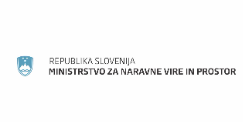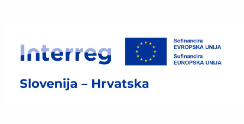The castle Grad open for visitors
From the 13th of April 2021 onwards, we invite you to visit the Grad Castle in Goričko Nature Park.
The castle Grad closed for visitors
Dear visitors,
castle Grad is from Thursday, 1st of April 2021, to Monday, 12th of April 2021, closed for visitors.
The Grad Castle Open for Visitors
From the 2nd of March 2021 onwards, we invite you to visit the Grad Castle in Goričko Nature Park. After a longer autumn-winter closure the castle door is open for visitors.
Biodiversity - Art of Life
Everything what we are doing in the LIFE NATURAVIVA project, you can find here.
The History of the Castle
The Grad Castle above eponyomus village proudly rises on the top of a steep hill of basalt tuff. The estate around the castle was included by King Béla III into the Kingdom of Hungary and in 1183 donated to the newly founded Cistercian monastery in Szentgotthárd. The estate, called Lyndwa, was first mentioned in written sources already in 1208, while first records on the existence of the castle date to year 1275. Archaeological excavations proved its existence as early as the 11th century. According to the legend, the castle was founded by the Knights Templar. Castle got is todays extensive size in the 16th and 17th centuries, while in the 18th and 19th centuries castle was the subject of extensive renovations. In 1751, a bell tower was added to the castle tower with a castle chapel. Bell tower, build on the plans of the architect Josef Hueber, was also the final act of the baroque reconstruction. The bell tower was renovated in 2001.
To the visitors of Castle Grad
Dear visitors.We would like to inform you that Grad Castle is still CLOSED for visitors until Thursday, May 7th, 2020. We will reopen it for you on Friday, May 8th, 2020. It will be open from 10 AM to 6 PM.Thank you for your understanding.
Exhibition on invasive alien species
An exhibition entitled "Invasive Alien Species, Our Unwanted Neighbors" has been opened at Grad Castle since 29.8.2019. The exhibition aims to present the most common and dangerous invasive alien species already present in Slovenia and also those that are potentially invasive. We want to increase their visibility, point out the dangers they cause and the measures that can prevent them from spreading. The exhibition is located right next to the largest castle in Slovenia and is free to view. The exhibition was made possible by the Ministry of Environment and Spatial Planning.
Hoopoe and Scops owl occupy more nestboxes each year
The Goričko Nature park Public institute together with the members of DOPPS – Birdlife Slovenia have been installing nestboxes for birds since year 2009. Woodpeckers make their own tree hole in which they nest. Other birds nests in woodpeckers old nest holes or in trees natural duplicates. Among these bird species are the Eurasian tree sparrow, Great tit, Starling, Hoopoe, Scops owl and Common redstart. Over the last ten years, more than 370 nestbox had been installed. In year 2019 the majority of the nestboxes was occupied by starlings, followed by the great tits. Scops Owl (Otus scops) Scops owl is the only true migrant among Slovenian owls, migrating to central Africa each winter. In year 2019 Scops owl nested in 19 nestboxes but unfortunatelly the wet spring months caused low breeding success. The pairs were nesting even at the beginning of August, which is very late as they start to migrate towards south after 15th of August. From 19 nests, from 6 nests young failed to fledged. Nonetheless, 51 young Scops owl successfully fledged from the remaining nestboxes. In 2018 a few Scops owls were taged with GPS transmitters. The aim was to record their migratory route from Goričko (Slovenia) to Africa and back. Four owls were successfully recaptured with the aim to remove the GPS tranmitters from their backs. From these devices the first information on Scops owl migration routes were obtained. They spent the winter in Nigeria and when returnig back to Europe this small bird traveled a few hundreds kilometers per day. This is especially remarkable for a bird that weighs as much as a chocolate bar. Hoopoe (Upupa epops) Unlike the Scops owl, Hoopoes take a longer time to occupy the nestboxes. Since the 2009, they have only nested in a couple of nestboxes. In the last two years (2018 and 2019) they started to occupy nestboxes in higher numbers. In 2018 they had nested in 12 and in 2019 in 14 nestboxes. Some hoopoes have the luck to nest in natural tree cavities or holes. A few pairs nest each year in the same tree holes therefore preserving and protecting these cavities is crucial. We are especially delighted that all of the tree owners eagerly await the return of this beautiful bird each year.








